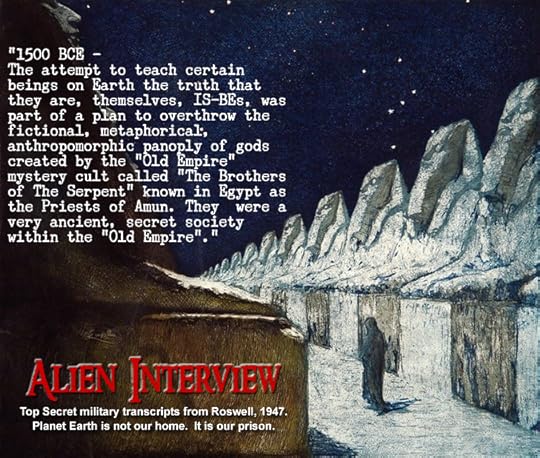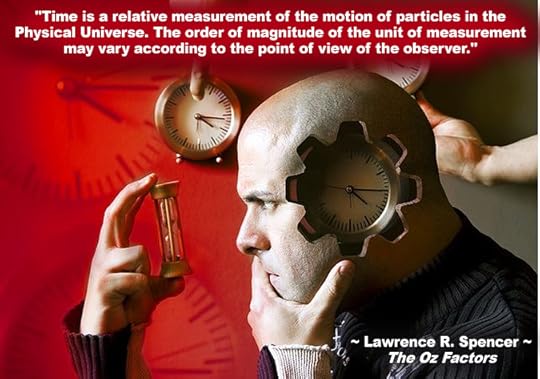Lawrence R. Spencer's Blog, page 452
June 22, 2016
CONSCIENTIOUS OBJECTOR CLOWN
When I was 16 years old I registered for the military draft as a Conscientious Objector. You can too.
(Painting by Ron English)
A conscientious objector (CO) is an “individual who has claimed the right to refuse to perform military service” on the grounds of freedom of thought, conscience, and/or religion. In some countries, conscientious objectors are assigned to an alternative civilian service as a substitute for conscription or military service. Some conscientious objectors consider themselves pacifist, non-interventionist, non-resistant, or antimilitarist. The international definition of conscientious objection officially broadened on March 8, 1995 when the United Nations Commission on Human Rights resolution 1995/83 stated that “persons performing military service should not be excluded from the right to have conscientious objections to military service.” That definition was re-affirmed in 1998, when the United Nations Office of the High Commissioner for Human Rights document called “Conscientious objection to military service, United Nations Commission on Human Rights resolution 1998/77” officially recognized that “persons [already] performing military service may develop conscientious objections.
The most famous American conscientious objector. Cassius Clay Jr. ( MUHAMMED ALI) was an Olympic gold medal winning boxer and 3 time professional Heavyweight boxing champion in the life of his boxing career. In 1964 Clay converted to Islam and changed his name to Muhammed Ali. In 1966 Ali was drafted for the Viet Nam war. He refused to be inducted and applied as a conscientious objector. His application was denied by the local draft board. His title and boxing license were temporarily suspended. Ali took his case to the Supreme Court and was eventually granted CO status and returned to boxing.
MAHATMA GANDHI is the father of India. During that country’s fight for independence Gandhi was their political and spiritual leader. He was the pioneer of resistence to tyranny through non-violent mass civil disobedience. But Gandhi was more than just a wise man in a loin cloth. He was educated in London as a lawyer. During the Boer War in South Africa Gandhi served as a Sargeant Major in the British Ambulance Corps.
EVERY PACIFIST IS A CONSCIENTIOUS OBJECTOR. NOT EVERY CONSCIENTIOUS OBJECTOR IS A PACIFIST.
Originally posted 2012-06-20 00:48:29. Republished by Blog Post Promoter
June 21, 2016
NOT HOME
A TRAGIC MISUNDERSTANDING

“A battle was waged between the “Old Empire” forces and The Domain through religious conquest. Between 1500 BCE and about 1200 BCE, The Domain Forces attempted to teach the concept of an individual, Immortal Spiritual Being, to several influential beings on Earth.
One such instance resulted in a very tragic misunderstanding, misinterpretation and misapplication of the concept. The idea was perverted and applied to mean that there is only one IS-BE, instead of the truth that everyone is an IS-BE! Obviously, this was a gross incomprehension and an utter unwillingness to take responsibility for one’s own power.
The “Old Empire” priests managed to corrupt the concept of individual immortality into the idea that there is only one, all-powerful IS-BE, and that no one else is or is allowed to be an IS-BE. Obviously, this is the work of the “Old Empire” amnesia operation.
It is easy to teach this altered notion to beings who do not want to be responsible for their own lives. Slaves are such beings. As long as one chooses to assign responsibility for creation, existence and personal accountability for one’s own thoughts and actions to others, one is a slave.
As a result, the concept of a single monotheistic “god” resulted and was promoted by many self-proclaimed prophets, such as the Jewish slave leader — Moses — [i] (Footnote) who grew up in the household of the Pharaoh Amenhotep III [ii] (Footnote) and his son, Akhenaten [iii] (Footnote) and his wife Nefertiti, [iv] (Footnote) as well as his son Tutankhamen. [v] (Footnote)
The attempt to teach certain beings on Earth the truth that they are, themselves, IS-BEs, was part of a plan to overthrow the fictional, metaphorical, anthropomorphic panoply of gods created by the “Old Empire” mystery cult called “The Brothers of The Serpent” [vi] (Footnote) known in Egypt as the Priests of Amun. [vii] (Footnote) They were a very ancient, secret society within the “Old Empire”.
 The Pharaoh Akhenaten was not a very intelligent being, and was heavily influenced by his personal ambition for self-glorification. He altered the concept of the individual spiritual being and embodied the concept in the sun god, Aten. His pitiful existence was soon ended. He was assassinated by Maya and Parennefer, two of the Priests of Amun, or “Amen”, which the Christians still say, who represented the interests of the “Old Empire” forces.
The Pharaoh Akhenaten was not a very intelligent being, and was heavily influenced by his personal ambition for self-glorification. He altered the concept of the individual spiritual being and embodied the concept in the sun god, Aten. His pitiful existence was soon ended. He was assassinated by Maya and Parennefer, two of the Priests of Amun, or “Amen”, which the Christians still say, who represented the interests of the “Old Empire” forces. The idea of “One God” was perpetuated by the Hebrew leader Moses [viii] (Footnote) while he was in Egypt. He left Egypt with his adopted people, the Jewish slaves. While they were crossing the desert, Moses was intercepted by an operative of the “Old Empire” near Mt. Sinai. Moses was tricked into believing that this operative was “the” One God through the use of hypnotic commands, as well as technical and aesthetic tricks which are commonly used by the “Old Empire” to trap IS-BEs. Thereafter, the Jewish slaves, who trusted the word of Moses implicitly, have worshiped a single god they call “Yaweh”. [ix] (Footnote).
The name “Yaweh” means “anonymous”, as the IS-BE who “worked with” Moses could not use an actual name or anything that would identify himself, or blow the cover of the amnesia / prison operation. The last thing the covert amnesia / hypnosis / prison system wants to do is to reveal themselves openly to the IS-BEs on Earth. They feel that this would restore the inmates memories!
This is the reason that all traces of physical encounters between operatives of space civilizations and humans is very carefully hidden, disguised, covered-up, denied or misdirected.
This “Old Empire” operative contacted Moses on a desert mountain top and delivered the “Ten Hypnotic Commands” to him. These commands are very forcefully worded, and compel an IS-BE into utter subservience to the will of the operator. These hypnotic commands are still in effect and influence the thought patterns of millions of IS-BEs thousands of years later!”
— Excerpt from the military transcripts published in the book ALIEN INTERVIEW

FOOTNOTES:
[i] “…Moses…”
“The cartouche of Akhenaten’s god and heavenly father, the Aten, bore the name Imram. In the Bible, Moses is referred to as the son of Amram, the Hebrew equivalent.
The name of the Egyptian deity Aten transliterates into the Hebrew word Adon . Adon, which is translated by English Bibles as “the Lord” (and Adonai, translated as “my Lord”) is used along with Jehovah (Yhwh) in the Bible as the exclusive personal names of God. Moreover, in ancient times, the name Jehovah (Yhwh) was written, but never spoken. Whenever the written name Jehovah (Yhwh) was to be read out loud, Adon (Aten) was voiced instead. The written form of Adon is infrequent, however, its limited usage is significant, especially in the first six books of the Bible (See under “LORD” in Strong’s Exhaustive Concordance), where it is reserved for the following applications alone: Moses addresses God using the title Adon/Aten (Exodus 4:10,13; 5:22; 34:9; Numbers 14:17; Deuteronomy 3:23; 7:26; 10:17); Moses, himself, is addressed both by Aaron (Ex.32:22; Num.12:11) and by Joshua (Numbers 11:28) using the title Adon/Aten; and Joshua also addresses God using the title Adon/Aten (Joshua 5:14 b; 7:7). As mentioned above, there is an established relationship between the literature of the Egyptian 18th Dynasty and the Bible. Psalm 104 is an embellishment of the Hymn to the Aten which was found by archaeologists at the city of Akhetaten.”
http://www.domainofman.com/ankhemmaat...
“Recent and non-Biblical view places Moses as a noble in the court of the Pharaoh Akhenaten. A significant number of scholars, from Sigmund Freud to Joseph Campbell, suggest that Moses may have fled Egypt after Akhenaten’s death (ca. 1334 BC) when many of the pharaoh’s monotheistic reforms were being violently reversed. The principal ideas behind this theory are: the monotheistic religion of Akhenaten being a possible predecessor to Moses’ monotheism, and the “Amarna Letters”, written by nobles to Akhenaten, which describe raiding bands of “Habiru” attacking the Egyptian territories in Mesopotamia.”
— Reference: Wikipedia.org
[ii] “…Amenhotep III…”
“Amenhotep III, meaning Amun is Satisfied was the ninth pharaoh of the Eighteenth dynasty. According to different authors, he ruled Egypt from June 1391 BC-December 1353 BCE or June 1388 BCE to December 1351 BC/1350 BCE after his father Thutmose IV died. Amenhotep III was the son of Thutmose IV by Mutemwia, a minor wife of Amenhotep’s father. Amenhotep III fathered two sons with his Great Royal Wife Tiye, a great queen known as the progenitor of monotheism via the Crown Prince Tuthmose who predeceased his father, and his second son, Akhenaten, who ultimately succeeded him to the throne.”
— Reference: Wikipedia.org
[iii] “…Akhenaten…”
“Akhenaten, meaning Effective spirit of Aten, first known as Amenhotep IV (sometimes read as Amenophis IV and meaning Amun is Satisfied) before his first year, was a Pharaoh of the Eighteenth dynasty of Egypt. He is especially noted for attempting to compel the Egyptian population in the monotheistic worship of Aten, although there are doubts as to how successful he was at this.
Amenhotep IV succeeded his father after Amenhotep III’s death at the end of his 38-year reign, possibly after a coregency lasting between either 1 to 2 or 12 years. Suggested dates for Akhenaten’s reign (subject to the debates surrounding Egyptian chronology) are from 1353 BCE – 1336 BCE or 1351 BCE – 1334 BCE Akhenaten’s chief wife was Nefertiti.
His religious reformation appears to have begun with his decision to celebrate a Sed festival in his third regnal year – a highly unusual step, since a Sed-festival, a sort of royal jubilee intended to reinforce the Pharaoh’s divine powers of kingship, was traditionally held in the thirtieth year of a Pharaoh’s reign.
Year eight marked the beginning of construction on his new capital, Akhetaten (‘Horizon of Aten’), at the site known today as Amarna. In the same year, Amenhotep IV officially changed his name to Akhenaten (‘Effective Spirit of Aten’) as evidence of his shifting religious perspective. Very soon afterward he centralized Egyptian religious practices in Akhenaten, though construction of the city seems to have continued for several more years. In honor of Aten, Akhenaten also oversaw the construction of some of the most massive temple complexes in ancient Egypt, including one at Karnak, close to the old temple of Amun. In these new temples, Aten was worshipped in the open sunlight, rather than in dark temple enclosures, as had been the previous custom. Akhenaten is also believed to have composed the Great Hymn to the Aten.
Initially, Akhenaten presented Aten as a variant of the familiar supreme deity Amun-Ra (itself the result of an earlier rise to prominence of the cult of Amun, resulting in Amun becoming merged with the sun god Ra), in an attempt to put his ideas in a familiar Egyptian religious context. However, by Year 9 of his reign Akhenaten declared that Aten was not merely the supreme god, but the only god, and that he, Akhenaten, was the only intermediary between Aten and his people. He ordered the defacing of Amun’s temples throughout Egypt, and in a number of instances inscriptions of the plural ‘gods’ were also removed.
Aten’s name is also written differently after Year 9, to emphasize the radicalism of the new regime, which included a ban on idols, with the exception of a rayed solar disc, in which the rays (commonly depicted ending in hands) appear to represent the unseen spirit of Aten, who by then was evidently considered not merely a sun god, but rather a universal deity. It is important to note, however, that representations of the Aten were always accompanied with a sort of “hieroglyphic footnote”, stating that the representation of the sun as All-encompassing Creator was to be taken as just that: a representation of something that, by its very nature as something transcending creation, cannot be fully or adequately represented by any one part of that creation.”
This Amarna period is also associated with a serious outbreak of a pandemic, possibly the plague, or polio, or perhaps the world’s first recorded outbreak of influenza, which came from Egypt and spread throughout the Middle East, killing Suppiluliuma I, the Hittite King. Influenza is a disease associated with the close proximity of water fowl, pigs and humans, and its origin as a pandemic disease may be due to the development of agricultural systems that allow the mixing of these animals and their wastes.
Some of the first archaeological evidence for this agricultural system is during the Amarna period of Ancient Egypt, and the pandemic that followed this period throughout the Ancient Near East may have been the earliest recorded outbreak of influenza. However, the precise nature of this Egyptian plague remains unknown and Asia has also been suggested as a possible site of origin of pandemic influenza in humans. The prevalence of disease may help explain the rapidity with which the site of Akhetaten was subsequently abandoned. It may also explain why later generations considered the gods to have turned against the Amarna monarchs. The black plague has also been suggested due to the fact that at Amarna the traces of the plague have been found.”
— Reference: Wikipedia.org
[iv] “… Nefertiti…
“Nefertiti (pronounced at the time something like *nafrati ː ta) (c. 1370 BCE – c. 1330 BCE) was the Great Royal Wife (or chief consort/wife) of the Egyptian Pharaoh Akhenaten. She was the mother-in-law and probable stepmother of the Pharaoh Tutankhamun. Nefertiti may have also ruled as pharaoh in her own right under the name Neferneferuaten briefly after her husband’s death and before the accession of Tutankhamun, although this identification is doubted by the latest research. Her name roughly translates to “the beautiful (or perfect) one has arrived”. She also shares her name with a type of elongated gold bead, called “nefer”, that she was often portrayed as wearing. She was made famous by her bust, now in Berlin’s Altes Museum.
Nefertiti’s parentage is not known with certainty, but it is now generally believed that she was the daughter of AY later to be pharaoh. Another theory that gained some support identified Nefertiti with the Mitanni princess Tadukhipa. The name Nimerithin has been mentioned in older scrolls, as an alternative name, but this has not yet been officially confirmed. It has also been suggested that Nefertiti was a daughter or relative of Amenhotep III, or of the high Theban nobility. Another theory places Nefertiti as the daughter of Sitamun, half-sister of Amenhotep III. Queen Iaret was Sitamun’s mother. Iaret held important hereditary titles that ceased to exist after the ascension of Amenhotep III. Sitamun is elevated to Great Royal Wife beside Tiye but there is no indication that she ever had children and if so with whom. There is some evidence based upon the titles of each of these women that suggests that they were somehow related to one another in her family… Her name means “beautiful one”. Nefertiti only worshiped one god by the name of Aten. Depending on which reconstruction of the genealogy of the ancient Egyptian pharaohs is followed, her husband Akhenaten may have been the father or half-brother of the Pharaoh Tutankhaten (later called Tutankhamen).
She had six known daughters with the Pharaoh Akhenaten . This is a list with suggested years of birth:
Meritaten: Before year one or the very beginning of year one.(1356 BC).
Meketaten: Year 1 or three (1349 BC).
, later queen of Tutankhamun
Neferneferuaten Tasherit: Year 6 (1344 BC)
Neferneferure: Year 9 (1341 BC).
Setepenre: Year 11 (1339 BC).”
— Reference: Wikipedia.org
[v] “… Tutankhamun…”
“He was the son of Akhenaten, also known as Amenhotep IV, and his minor wife Queen Kiya. Queen Kiya’s title was “Greatly Beloved Wife of Akhenaten” so it is possible that she could have borne him an heir. Supporting this theory, images on the tomb wall in the tomb of Akhenaten show a royal fan bearer standing next to Kiya’s death bed, fanning what is either a princess or more likely a wet nurse holding a baby, which would indicate that the wet nurse was holding the boy-king-to-be.
Tutankhamun was only nine or ten years old when he became pharaoh, and reigned for approximately ten years, making him nineteen years old at death. In historical terms Tutankhamun significance stems from his rejection of the radical religious innovations introduced by his predecessor Akenhaten and that his tomb, uniquely, in the Valley of the Kings was discovered almost completely intact — the most complete ancient Egyptian tomb ever found. As Tutankhamun began his reign at such an early age, his vizier and eventual successor Ay was probably making most of the important political decisions during Tutankhamun’s reign.”
— Reference: Wikipedia.org
[vi] …”Brothers of the Snake”…
“It cannot be overemphasized that the serpent or snake plays no role in the teachings or ritual of regular Freemasonry. Its introduction as a fastener for masonic aprons is easily seen as the work of regalia manufacturers. That said, the symbolic usages of the snake are of interest to students of religion, esoterica, and of history.
On the other hand, George Oliver writes that the serpent is a “significant symbol in Freemasonry : Moses’ rod changed into a serpent, “The serpentine emblem of Masonry… is a bright symbol of Hope; for the promised Deliverer will open the gates of Heaven to his faithful followers by bruising its head, and they shall enter triumphantly, trampling on its prostrate body.” “A striking emblem of Christianity triumphant; and bearing an undoubted reference to the promise made to Adam after his unhappy fall.” In mainstream Christian beliefs, the snake represents temptation and evil: the snake is the servant of Satan. But it has also had its more positive significance.
In ancient Egyptian mythology the world was created by four powers, one of which was the sun god Amun-Ra who took the form of a snake and emerged from the water to inseminated the cosmic egg, the kneph , which was created by the other gods. In another story, a god named Hathor transformed himself into a poisonous snake called Agep and killed Seth. He also guarded the wheat fields where the spirit of Horus was said to live, bringing the sheaf of wheat to be regarded as the symbol of rebirth. W. Bro. H. Meij suggests that this is the root of the masonic usage of an ear of corn in the Fellowcraft degree.
In Greek mythology Zeus freed two eagles which met at the centre of the world, sometimes called the navel of the earth, which is guarded by a snake called Pytho. The symbol Serpens Candivorens, a snake biting its tail, represents the unending cycle of nature between destruction, and new creation, life and death. The Greeks called this figure Ouroboros. Chinese mythology maintained that the world was surrounded by two entwined snakes, which symbolized the power and wisdom of the creator. In another legend the Buddha was attacked by a snake which bound itself seven times around his waist. Due to the inner strength of the Buddha, the snake could not kill him but instead became his follower.
Astrologers, or those interested in the historical development of astrology, will point out that some systems include a thirteenth sign of the zodiac known as Ophiuchus Serpentarius, the Serpent Holder. This constellation lies between Sagittarius and Libra, somewhat over Scorpio. In the sixteenth and seventeenth centuries this constellation was called Alpheichius. Known as the “God of Invocation”, this house was named after the legendary healer, Ophiuchus (Asclepius). The two serpents in his hands later replaced the twin ribbons around the caduceus which became a symbol for physicians.”
— Reference: freemasonry.bcy.ca/symbolism/serpent....
[vii] “…assassinated by the Priests of Amen…”
“The High Priest of Amun or First Prophet of Amun was the highest ranking priest in the priesthood of the ancient Egyptian god Amun.
“Maya” was the High Priest of Amen until year 4 of Akhenaten. Redford speculates that Maya is short for Ptahmose and that Ptahmose served from the end of the reign of Amenhotep III until the beginning of the time of Akhenaten.
“Parennefer” was the High Priest of Amen during the reigns of Tutankhamen and Horemheb.”
— Reference: Wikipedia.org
[viii] “…Moses…”
“(The Exodus of Hebrew slave from Egypt, led by Moses) may have occurred around 1400s BC, since the Amarna letters, written ca. forty years later to Pharaohs Amenhotep III and Amenhotep IV (Akhenaten) indicate that Canaan was being invaded by the “Habiru” — whom some scholars in the 1950s to 1970s interpret to mean “Hebrews”.
Exodus 34:29-35 tells that after meeting with God the skin of Moses’ face became radiant, frightening the Israelites and leading Moses to wear a veil. Jonathan Kirsch, in his book Moses: A Life, thought that, since he subsequently had to wear a veil to hide it, Moses’ face was disfigured by a sort of “divine radiation burn”.
— Reference: Wikipedia.org
[ix] .. Yahweh…”
“The cartouche of Akhenaten’s god and heavenly father, the Aten, bore the name Imram. In the Bible, Moses is referred to as the son of Amram, the Hebrew equivalent. The name of the Egyptian deity Aten transliterates into the Hebrew word Adon. Adon, which is translated by English Bibles as “the Lord” (and Adonai, translated as “my Lord”) is used along with Jehovah (Yhwh) in the Bible as the exclusive personal names of God. Moreover, in ancient times, the name Jehovah (Yhwh) was written, but never spoken. Whenever the written name Jehovah (Yhwh) was to be read out loud, Adon (Aten) was voiced instead. The written form of Adon is infrequent, however, its limited usage is significant, especially in the first six books of the Bible (See under “LORD” in Strong’s Exhaustive Concordance), where it is reserved for the following applications alone: Moses addresses God using the title Adon/Aten (Exodus 4:10,13; 5:22; 34:9; Numbers 14:17; Deuteronomy 3:23; 7:26; 10:17); Moses, himself, is addressed both by Aaron (Ex.32:22; Num.12:11) and by Joshua (Numbers 11:28) using the title Adon/Aten; and Joshua also addresses God using the title Adon/Aten (Joshua 5:14 b; 7:7). As mentioned above, there is an established relationship between the literature of the Egyptian 18th Dynasty and the Bible. Psalm 104 is an embellishment of the Hymn to the Aten which was found by archaeologists at the city of Akhetaten.”
— Reference: http://www.domainofman.com/ankhemmaat...
“Yahweh is an English rendition of יהוה , the name of the God of Israel. During the Babylonian captivity, the Hebrew language spoken by the Jews was replaced by the Aramaic language of their Babylonian captors, which was closely related to Hebrew and, while sharing many vocabulary words in common, contained some words that sounded the same or similar but had other meanings. In Aramaic, the Hebrew word for “blaspheme” used in Leviticus 24:16, “Anyone who blasphemes the name of YHWH must be put to death” carried the meaning of “pronounce” rather than “blaspheme”.
— Reference: Wikipedia.org
Originally posted 2012-10-20 23:51:22. Republished by Blog Post Promoter
June 20, 2016
THE FOREST FOR THE TREES
The 12 Common Denominators of Human Logic that prevent us from finding solutions to the problems of survival.
Originally posted 2012-03-17 11:22:43. Republished by Blog Post Promoter
June 19, 2016
UFO MYTH AND IMAGINATION
Flying Saucers may be a psychic or mythical phenomenon

Dr. Jacques Vallee, a French-American computer specialist with a background in astrophysics, once served as consultant to NASA’s Mars Map project. Jacques Vallee is one of ufology’s major figures – and also its most original thinker. Vallee, who holds a master’s degree in astrophysics and a Ph.D. in computer science from Northwestern University.
But by 1969, when he published Passport to Magonia (Regnery), Vallee’s assessment of the UFO phenomenon had undergone a significant shift. Much to the consternation of the “scientific ufologists” who had seen him as one of their champions, Vallee now s eemed to be backing away from the extraterrestrial hypotheses and advancing the radical view that UFOs are paranormal in nature and a modern space age manifestation of a phenomenon which assumes different guises in different historical contexts.
eemed to be backing away from the extraterrestrial hypotheses and advancing the radical view that UFOs are paranormal in nature and a modern space age manifestation of a phenomenon which assumes different guises in different historical contexts.
” When the underlying archetypes are extracted,” he wrote, “the saucer myth is seen to coincide to a remarkable degree with the fairy-faith of Celtic countries … religious miracles… and the widespread belief among all peoples concerning entities whose physical and psychological descriptions place them in the same category as the present-day ufonauts.”
In The Invisible College (E.P. Dutton, 1975) Vallee posits the idea of a “control system.” UFOs and related phenomena are “the means through which man’s  concepts are being rearranged.” Their ultimate source may be unknowable, at least at this stage of human development; what we do know, according to Vallee, is that they are presenting us with continually recurring “absurd” messages and appearances which defy rational analysis but which nonetheless address human beings on the level of myth and imagination.
concepts are being rearranged.” Their ultimate source may be unknowable, at least at this stage of human development; what we do know, according to Vallee, is that they are presenting us with continually recurring “absurd” messages and appearances which defy rational analysis but which nonetheless address human beings on the level of myth and imagination.
“When I speak of a control system for planet earth,” he says, ” I do not want my words to be misunderstood: I do not mean that some higher order of beings has locked us inside the constraints of a space-bound jail, closely monitored by psychic entities we might call angels or demons. I do not propose to redefine God. What I do mean is that mythology rules at a level of our social reality over which normal political and intellectual action has no power….”
READ THE ENTIRE INTERVIEW WITH JACQUES VALLE HERE:
COSMIC CLOCK
“Time is a subject that is far from absolute. The measurement of time is the activity of monitoring the movement of matter or energy particles through space. In order to establish the passage of time, one must establish an agreed-upon reference point for beginning the period of time to be measured. Then, the increments of measurement must be uniformly consistent throughout the period of time being quantified. This set of qualifying factors, however, applies only to the Physical Universe.
Does time (as the Munchkins would say) morally, ethically, spiritually, physically, positively, absolutely, undeniably and reliably actually, really exist?
Imagine that you are completely isolated, unable to observe any physical motion whatsoever–no sun, moon and stars, night or day. If you were isolated from your own body such that you could not detect any breathing rhythm or heartbeat or cellular motion of any kind to use as a reference point, would time exist?
People who have been locked in solitary confinement, whether in a prison or in an isolation chamber, have experienced the phenomenon of “no time”.
Since many people seem to have an innate, built-in time sense, or a “biological clock”, there may be a subjective awareness of time. But, even so, time is determined by measuring some motion in the physical universe. 
How can the dates of something for which you have no starting point be measured? How can the age of our planet, our galaxy, or the entire physical universe be determined? How can the age of something which does not exist in the physical universe, such as a spirit, be calculated?
Logically, an arbitrary unit of measurement must be chosen. Then a particle or object which can move through space must exist. This particle would have to travel at a uniformly predictable rate of speed. The unit of measurement would depend on the magnitude or size of the motion of the particle relative to a fixed point in space, or a fixed point of view.
Here is a simple example: let’s imagine a theoretical COSMIC TIME CLOCK in which ONE SECOND equals ONE EARTH YEAR.
If you counted the ticks of the second hand of this cosmic clock in “normal” time increments of 24 hour days, every day, how long would it take you to measure the recent history of planet Earth?
2 years and 22 days ago would equal the end of the Dinosaur Age (75 million BC)
1 hour, 14 minutes,6 seconds ago equals 2,450 BC– Egyptian Pharaoh Khufu
53 minutes, 36 seconds ago equals 1220 BC–Moses’ Exodus from Egypt
42 minutes 39 seconds ago equals 563 BC–Buddha is born
33 minutes 16 seconds ago equals “year zero” the calendar in use throughout most of the world, sponsored by Pope Gregory XIII in 1582
8 minutes 24 seconds ago equals 1492 AD, Columbus “discovers” America
3 minutes 40 seconds ago equals 1776 AD, the United States of America is founded
One human average lifetime (70 years) equals 1 minute, 10 seconds on the Cosmic Time Clock.
Time is a relative measurement of the motion of particles in the Physical Universe. The order of magnitude of the unit of measurement may vary according to the point of view of the observer.
To venture a guess as to the age of the physical universe, based on a supposed decay of matter is another example of “scientific theory” based on assumption and personal viewpoint.
According to some authorities, mainly from the non-physical sciences, such as philosophy, there is reason to believe that the physical universe may have existed for many trillions of years or perhaps for a nearly infinite period of time. However, since time is a relative factor, it’s importance as a tool for evaluating other information is also relative.”
— Excerpt from THE OZ FACTORS, by Lawrence R. Spencer
Originally posted 2015-03-07 22:01:04. Republished by Blog Post Promoter
THE MANY SELVES OF KATHERINE NORTH
 “The Many Selves of Katherine North” is one of the most unique and important novels ever written. The subjective experience of sentient existence on Earth, spirits embodied as flesh in a menagerie of creatures of land, sky and sea, is eloquently observed and described by the author Emma Geen. I have read thousands of books: not one can be compared to or approach the description of sentience awareness and subjective perception of the myriad living creatures of Earth, including the human animal. This book should be read, regurgitated, savored, digested and assimilated into the essence of every spirit: the beings of Earth will rejoice with understanding and thanks for being perceived as their Many Selves.
“The Many Selves of Katherine North” is one of the most unique and important novels ever written. The subjective experience of sentient existence on Earth, spirits embodied as flesh in a menagerie of creatures of land, sky and sea, is eloquently observed and described by the author Emma Geen. I have read thousands of books: not one can be compared to or approach the description of sentience awareness and subjective perception of the myriad living creatures of Earth, including the human animal. This book should be read, regurgitated, savored, digested and assimilated into the essence of every spirit: the beings of Earth will rejoice with understanding and thanks for being perceived as their Many Selves.
— Lawrence R. Spencer, Author of The Oz Factors and Editor of Alien Interview
June 18, 2016
WHEN BONES WERE JUST BONES


Excerpts from the book “1001 THINGS TO DO WHILE YOU’RE DEAD“:
# 243 FEEL SORRY FOR YOURSELF
This doesn’t need any explanation. Many people have a “native” ability to do this, especially after they have lost their body, as well as everything they worked for and accumulated during an entire lifetime.
Ideally, everyone would be allowed to have 4 or 5 bodies at once. So, when you lose one or two it’s not such a big deal. Unfortunately, Mother Nature hasn’t figured out how to allow each spirit to run more than one body at a time yet – not counting “the gods” of course.
But who knows, with enough time and practice you may remember how to do this too! According to Earth mythology the ancient gods of Greece, Egypt, China, India and Mesopotamia could manifest themselves in many guises and forms. Maybe you can find one or more of those ancient gods to teach you this skill.
# 497 REGRET YOUR PAST
Endless years of agonizing can be consumed in this activity. It can be a lot of fun.
There is a lot of drama involved in regretting the past. People love drama. Mulling over all the things you did, you could have done, you shouldn’t have done, you wished you had done or not done, etc., is very dramatic.
There are a nearly infinite number of scenes from past lives you can replay, like old radio or TV soap operas. However, most of them have the same plot lines and get boring after a while. And, you can’t change any of them.
# 437 FEEL LONELY
This takes a total lack of imagination. You have always been with yourself, and by yourself, for nearly all of eternity. You are your own best friend. Enjoy yourself.
However, if you want some companionship, go out a find another spirit, a person, or a life form and befriend them. They will probably appreciate not being alone.
# 608 REMINISCE ABOUT THE “GOOD OLD DAYS
This can provide endless hours, years or millennia of pleasurable amusement for yourself and entertainment for others. Some writers, like Mark Twain, earned an excellent living by reminiscing about the past for most of their life.
Originally posted 2012-03-28 14:53:20. Republished by Blog Post Promoter
Pompeii Fast Food Joint To Re-open After Two Thousand Year Hiatus
New excavations of Pompeii, Italy have exposed ‘fast food’ restaurants that can still be used today! One of these is being restored to operation.
READ THE ARTICLE HERE: Pompeii Fast Food Joint To Re-open After Two Thousand Year Hiatus.
Originally posted 2011-07-06 12:03:17. Republished by Blog Post Promoter










